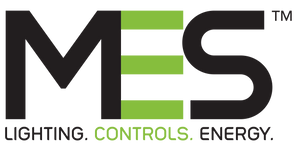Stop me if you’ve heard this one before: you walk into a modern office or a high-tech manufacturing facility, and you’re immediately struck by the lighting. It’s not just bright, but perfectly balanced, enhancing productivity, ensuring safety, and creating a professional atmosphere. You think to yourself, “I need this for my business.” But then the questions flood in. What are the latest trends? How do I choose the right lighting? Will it be worth the investment?
Navigating the world of commercial lighting can be daunting, but that’s where MES comes in. With years of experience in the lighting industry, we’ve helped countless businesses transform their workspaces with smart, sustainable, and effective LED solutions. In this article, you will learn about the latest trends in commercial LED lighting, understand the benefits of these advanced systems, and discover how to make the best choices for your business. Let’s illuminate the path to a brighter, more efficient future for your commercial space.
The Evolution of Commercial Lighting
Commercial lighting has come a long way from the days of flickering fluorescent tubes and energy-guzzling incandescent bulbs. The evolution began with the introduction of compact fluorescent lamps (CFLs), which offered better energy efficiency compared to traditional lighting. However, it was the advent of LED (light-emitting diode) technology that truly revolutionized the industry.
At MES, we’ve witnessed firsthand how LED lighting has quickly become the gold standard for commercial spaces due to its unparalleled efficiency, longevity, and versatility. LEDs consume significantly less power, have a much longer lifespan, and provide superior light quality. As businesses look to cut costs and reduce their environmental footprint, the shift towards LED lighting has been both rapid and widespread.
In recent years, advancements in LED technology have further expanded the possibilities. Innovations such as smart lighting systems, which allow for remote control and automation, and network lighting controls (NLC), which provide advanced management capabilities, are leading the charge in commercial lighting trends.
Current Trends in LED Commercial Lighting
Smart Lighting Solutions
Smart lighting systems are one of the most prominent trends in commercial lighting today. These systems use sensors, wireless connectivity, and automation to provide optimal lighting conditions while maximizing energy efficiency. At MES, we offer advanced smart lighting solutions that include occupancy sensors, which ensure lights are only on when a space is in use, and daylight sensors, which adjust lighting based on the amount of natural light available.
Network Lighting Controls (NLC)
Network lighting controls (NLC) are revolutionizing the way businesses manage their lighting systems. NLC systems allow for comprehensive control over lighting settings, enabling businesses to adjust lighting levels, schedules, and even colors through a centralized platform. This not only enhances energy efficiency but also provides valuable data on usage patterns and performance. MES’s NLC solutions are designed to offer seamless integration and user-friendly interfaces, making advanced lighting management accessible to all businesses.
Energy Efficiency and Sustainability
As businesses strive to meet sustainability goals and reduce operational costs, energy-efficient lighting solutions remain a top priority. LED lighting is inherently more energy-efficient than traditional lighting, and new developments continue to push the boundaries of efficiency. At MES, we are committed to sustainability, offering products that use recyclable materials and systems that reduce waste and energy consumption.
Benefits of LED Lighting for Commercial Spaces
Cost Savings
One of the most significant advantages of LED lighting is the cost savings it offers. LEDs consume up to 80% less energy than traditional lighting, resulting in substantial reductions in energy bills. Moreover, their long lifespan means fewer replacements and lower maintenance costs. MES’s lighting solutions are designed to deliver maximum efficiency and savings.
Enhanced Aesthetics
LED lighting offers greater flexibility in design, allowing businesses to create customized lighting solutions that enhance the aesthetics of their spaces. Whether it’s highlighting architectural features, creating a specific ambiance, or ensuring uniform illumination, LEDs can be tailored to meet various design requirements. MES’s products provide high-quality lighting that enhances the look and feel of any commercial space.
Improved Functionality and Productivity
The quality of light provided by LEDs can significantly impact the functionality and productivity of a commercial space. Better color rendering, reduced glare, and consistent light distribution contribute to a more comfortable and effective work environment. In industrial settings, improved lighting can enhance safety and precision. MES’s lighting solutions are engineered to meet the diverse needs of different commercial environments.
Choosing the Right LED Lighting for Your Business
Assessing Your Needs
The first step in choosing the right LED lighting for your business is to assess your specific needs. Consider the purpose of the lighting, the size of the space, and the nature of the work being performed. For instance, an office may require bright, even lighting to support productivity, while a manufacturing facility might need focused, high-intensity lighting for detailed tasks. MES’s experts can help you evaluate your needs and recommend the best solutions.
Key Factors to Consider
When selecting LED lighting, several factors should be considered:
- Lumens and Wattage: Ensure the lights provide adequate brightness (measured in lumens) without consuming excessive power (measured in watts).
- Color Temperature: Choose the right color temperature to create the desired atmosphere. Cooler temperatures (5000K and above) are ideal for workspaces, while warmer temperatures (3000K and below) can create a more relaxed environment.
- CRI (Color Rendering Index): A higher CRI (close to 100) indicates better color accuracy, which is important in settings where color distinction is crucial.
- Dimming Capabilities: Consider lights with dimming options to allow for adjustable lighting levels, enhancing comfort and energy efficiency.
Tips for Making the Best Choice
- Consult with Experts: Seek advice from lighting professionals who can recommend the best solutions for your specific needs. MES’s team is always available to provide expert guidance.
- Test Before Implementation: If possible, test different lighting options in a small area before committing to a full installation.
- Consider Futureproofing: Choose lighting systems that are compatible with future upgrades and technologies, ensuring your investment remains relevant.
Cost Considerations and ROI
Initial Investment vs. Long-Term Savings
While the initial cost of LED lighting can be higher than traditional options, the long-term savings more than justify the investment. LEDs have a significantly longer lifespan, reducing the frequency and cost of replacements. Additionally, their energy efficiency leads to substantial reductions in electricity bills over time. At MES, we provide detailed cost-benefit analyses to help you make informed decisions.
Calculating ROI
To calculate the return on investment (ROI) for LED lighting, consider the following:
- Initial Costs: Include the purchase price, installation costs, and any necessary modifications to your existing infrastructure.
- Operational Savings: Factor in the reduced energy consumption and lower maintenance costs.
- Payback Period: Determine how long it will take for the savings to cover the initial investment. In many cases, businesses see a positive ROI within a few years. MES’s solutions are designed to offer rapid payback periods.
Incentives and Rebates
Many governments and utility companies offer incentives and rebates to encourage the adoption of energy-efficient technologies like LED lighting. Research available programmes in your area to offset some of the initial costs and further enhance your ROI. MES can assist you in identifying and applying for these incentives.
Implementation and Maintenance
Installation Best Practices
Proper installation is crucial to maximising the benefits of your LED lighting system. Work with experienced professionals to ensure the lights are correctly positioned and integrated into your existing electrical system. Pay attention to the manufacturer's guidelines and specifications to avoid common pitfalls. MES’s installation services ensure that your lighting system is set up for optimal performance.
Maintenance Tips
One of the advantages of LED lighting is its low maintenance requirements. However, regular inspections can help ensure optimal performance:
- Clean Fixtures: Dust and debris can reduce light output, so keep fixtures clean.
- Check for Wear and Tear: Periodically inspect the lights and related components for any signs of damage or wear.
- Monitor Performance: Keep an eye on light output and color consistency to identify any issues early.
Common Pitfalls to Avoid
- Overlooking Compatibility: Ensure that new LED systems are compatible with existing dimmers and controls to avoid performance issues.
- Ignoring Heat Management: LEDs produce less heat than traditional lights, but adequate ventilation is still important to prevent overheating and prolong the lifespan of the lights.
- Underestimating Lighting Needs: Accurately assess your lighting requirements to avoid under or over-lighting your space, which can affect both efficiency and comfort. MES’s experts can help you navigate these potential pitfalls.
Future Outlook: What's Next for Commercial Lighting?
Emerging Technologies
The future of commercial lighting is bright with emerging technologies poised to transform the industry further. Innovations such as Li-Fi (light fidelity), which uses light to transmit data, and advanced smart lighting systems that integrate with IoT (Internet of Things) devices, are set to offer unprecedented levels of control and efficiency. MES is at the forefront of these technological advancements, continually innovating to provide cutting-edge solutions.
Predictions for Future Trends
- Increased Automation: Expect more advanced automation features, allowing businesses to fine-tune their lighting systems based on real-time data and user preferences.
- Enhanced Sustainability: Continued advancements in energy efficiency and the use of sustainable materials will drive the adoption of greener lighting solutions.
- Personalized Lighting Experiences: As understanding of network lighting controls grows, businesses will increasingly adopt personalized lighting solutions to enhance employee well-being and productivity. MES is committed to staying ahead of these trends and providing the latest innovations to our clients.
Conclusion
In the rapidly evolving world of commercial lighting, staying ahead of the trends is essential for creating efficient, functional, and aesthetically pleasing spaces. By embracing the latest LED technologies and trends, you can enhance your business environment, achieve significant cost savings, and contribute to a more sustainable future.
Ready to upgrade your commercial lighting? Start by assessing your needs, exploring your


